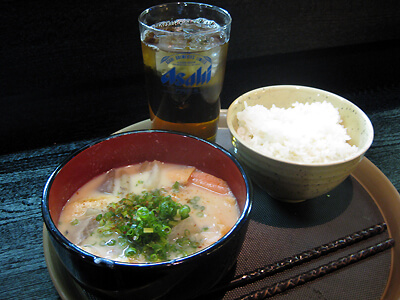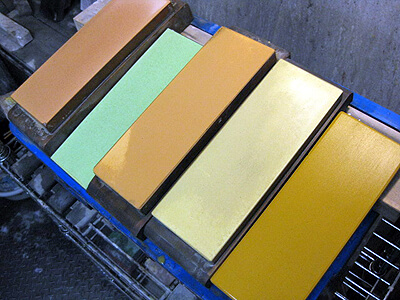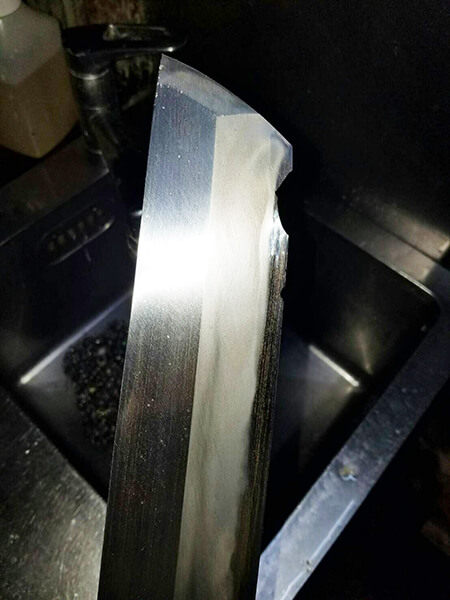Today’s honbazuke
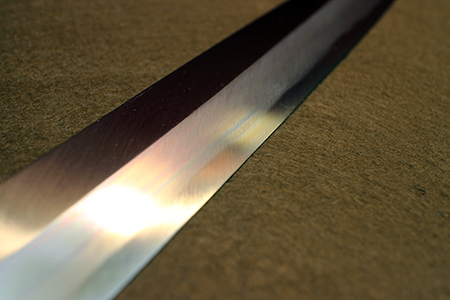
Today, I sharpened the newly repaired Yanagiba and Deba knives using both the honbazuke technique and experimenting with various coarse whetstones. Lately, I’ve been fascinated by coarse whetstones and have been trying out different ones to see which works best. Among them, the “Ebi In’s Super Whetstone #400” stood out, and I’ve been using it extensively.
When asked what makes it so great, I’d say it’s the combination of efficient sharpening, minimal stone wear, and excellent edge contact. It doesn’t feel gritty when sharpening, which gives the knives a gentle touch (laughs). There’s also a sense of not over-sharpening, resulting in beautifully refined edges.
I think the grittier whetstones tend to remove more material, leading to thicker edges. On the other hand, these “not over-sharpening” stones make post-coarse-whetstone processing easier (^^). They leave a slightly serrated edge, making them ideal for basic sharpening of stainless steel knives like gyuto and sujihiki.
However, I decided to return to diamond whetstones since yesterday (laughs). I realized I needed that precision once again. It’s all about finding the right balance and the right tool for the job! Sharpening is an art and a journey of discovery. Let’s keep exploring and refining our techniques!
Well, let me introduce you to today’s opponent.
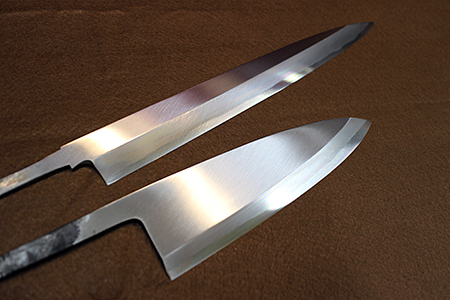
I have a Shirogami #2 steel 270mm Yanagiba and a 180mm Deba knife here. The owner specifically requested a “razor-sharp” edge, so I went for a “fully flat” sharpening style on the Yanagiba! It seemed like I could go even thinner with a “polished edge,” but I stopped myself because it might compromise the knife’s strength… If the cutting edge width becomes narrower, I think it’s okay to try a more aggressive sharpening approach. (Reason being: It will create a shallower edge angle than it is now!)

The whetstones I used were as follows: Coarse: Diamond #500 Medium: Aoto and Suita Finishing: Yagyu Sanmeito (natural whetstone)
The owner also requested a razor-sharp edge for the Deba knife. Since it’s a Togashi knife, I went for an aggressive sharpening approach, but I took extra care for the areas where there’s a possibility of cutting through bones by creating a “Natural Hamaguri” edge, while the tip area was finished with a flatter profile.
Still, I was a bit concerned about potential chipping, so I added Itohiki for added strength.
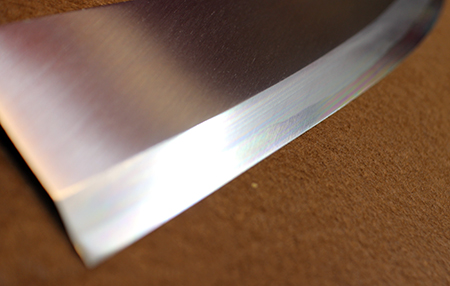
The whetstones I used were as follows: Coarse: Diamond #500 Medium: Aoto Finishing: I used a combination of Suita and Nakanura whetstones, or you could call it “Suinura” (laughs).
When sharpening a new knife, the coarse whetstone usually takes up about 70% of the sharpening process, at least that’s what I feel! Then, around 20% goes to the medium whetstone, and the last 10% to the finishing whetstone. But hey, that’s just my personal perspective!
- 2015-04-07
